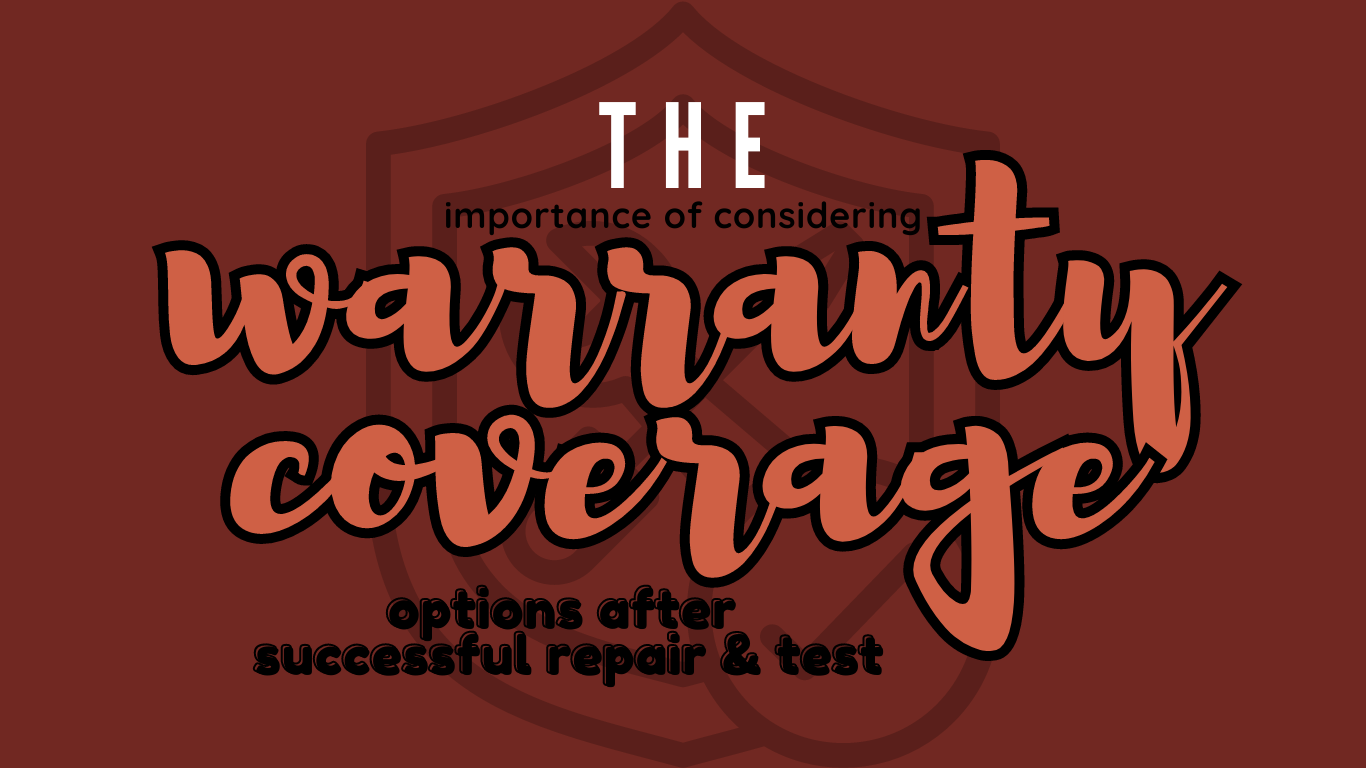Learning how to fix a dripping or leaky faucet is not only essential for homeowners in Franklin, Tennessee, but also beneficial in reducing water wastage and unnecessary costs.
In this comprehensive guide, we delve into how to fix a dripping or leaky faucet by going over the intricacies of fixing such issues, starting with understanding the basics of faucet leaks.
We will explore the lifespan and functionality of typical faucets, as well as the consequences that can arise from ignoring a dripping faucet.
By identifying different types of faucets and their unique parts, you’ll gain intimate knowledge of your plumbing fixtures.
Moreover, we provide a step-by-step guide on how to repair a leaking compression valve faucet right from preparing your workspace to replacing seat washers under stem nuts.
For more complex situations involving rust or sediment build-up around threads on cartridge-type faucets, we offer practical solutions like using penetrating oil.
The post further emphasizes when it’s time to contact professional plumbers and addresses handling complex models containing numerous parts.
Lastly, after successfully learning how to fix a dripping or leaky faucet, considering warranty coverage options is crucial – something our final section covers extensively.
Table Of Contents:
- Understanding Faucet Leaks: A Guide for Homeowners
- Identifying Types of Faucets and Their Unique Parts
- When To Contact Professional Plumbers
- Dealing With Rust Or Sediment Build-Up Around Threads On Cartridge-Type Faucets
- Importance of Considering Warranty Coverage Options After Successful Repair & Test
- FAQs in Relation to How to Fix a Dripping or Leaky Faucet
- Fixing a dripping or leaky faucet can save water and prevent further damage, ensuring efficient water usage.
Understanding Faucet Leaks: A Guide for Homeowners

As a homeowner, it’s imperative to be aware of the fundamentals of faucet leaks before attempting any repairs, as neglecting them can lead to substantial water bills and other consequential damage.
Ignoring a leaky faucet can lead to high water bills, sink surface damage, pipe corrosion, and elevated energy costs.
Here’s what you need to know:
The Lifespan and Functionality of Typical Faucets
Average faucets are designed to last for approximately 15 years under normal use.
However, factors such as frequent usage or high water pressure can accelerate wear on parts like the valve stem, set screw, or rubber washer, causing them to fail prematurely.
Additionally, a dripping sound from your faucet’s handles is often an early sign that something is wrong internally with your compression faucet.
Consequences of Ignoring Leaky Faucets
- Rising Water Bills: The constant drip-drip-drip from a leaky cartridge faucet adds up over time, leading to significantly higher water bills.
- Sink Surface Damage: Continuous exposure to moisture can cause discoloration and degradation of your sink surfaces around the faucet body.
- Pipe Corrosion: Over time, leaks could lead to pipe corrosion which would require more extensive repairs than just fixing a leaky handle.
- Elevated Energy Costs: If you have hot-water taps leaking, then you’re also wasting energy heating that wasted water back up again.
It’s important to pay close attention to any unusual activities occurring surrounding your plumbing system, including those related specifically to faucets.
By doing so, you can ensure longevity and efficiency throughout the entirety of their lifespan.
If any issues with your plumbing arise, it’s best to contact a professional for evaluation.
Identifying Types of Faucets and Their Unique Parts
If you’re dealing with a leaky faucet, the first step is to identify what type of faucet you have.
There are four main types: cartridge, compression, ceramic disk, and ball faucets.
Each one has its unique parts that may need replacement over time.
Differentiating Between Cartridge, Compression, Ceramic Disk, and Ball Type Faucets
- Cartridge faucets: These have a cartridge that moves up and down to control water flow. They can be single or double-handled.
- Compression faucets: The oldest type of faucet around. They use rubber washers that wear out over time, causing leaks.
- Ceramic disk faucets: A modern choice for many homeowners due to their durability. However, they still can develop leaks if the seals erode or crack.
- Ball-type faucets: Common in kitchens, these utilize many different parts, making them more susceptible to leakages than other types of taps.
You can find detailed diagrams and instructions on how each type works by visiting manufacturers’ websites like Moen and Delta, which will help diagnose your problem correctly.
Recognizing Key Components in Your Type of Faucet
In addition to identifying your tap’s model, it’s also essential to recognize its key components, such as the set screw, valve seat, and stem nut, among others.
For instance:
- A dripping sound often indicates a worn-out rubber washer in compression faucets that needs replacing.
- The handle might become loose due to an issue with the set screw in all kinds of taps.
Familiarize yourself with the relevant terms so you can accurately identify what parts are required when shopping for replacements online or at a hardware store.
Remember – don’t hesitate to call professional plumbers from TN Pipemaster if things get too complicated or if there’s excessive water pressure leading to bigger issues.
When To Contact Professional Plumbers

Sometimes, despite your best efforts to fix a leaky faucet, the dripping sound persists.
This can be particularly true if you have high water pressure in your home, which could lead to more significant problems if not addressed promptly by professionals who specialize in handling such issues.
Recognizing Signs That Require Professional Plumbing Services
The following are some signs that it’s time to call a professional plumber:
- Persistent Leaks: If, after replacing the necessary parts and turning the water back on, you still hear that annoying dripping sound or see water leaking from your faucet’s handles or body, then it might be time to seek help from experts like TN Pipemaster.
- Inconsistent Water Pressure: Excessively high or low water pressure is often an indication of bigger plumbing issues. If adjusting shutoff valves doesn’t solve this problem, reach out for professional assistance immediately.
- Frequent Leaks: Frequent leaks may indicate underlying problems with your plumbing system. In such cases, rather than constantly buying replacement parts and spending hours under the sink trying to fix things yourself – consult with professionals.
- Rusted Pipes & Valves: Rusting pipes and valve seats are beyond DIY fixes as they require special tools and expertise for proper repair or replacement procedures ensuring longevity post-repairs too.
Don’t delay – act now. Reach out immediately for emergency plumbing services provided by us at TN Pipemaster.
Our team of skilled plumbers will assess the situation thoroughly before proceeding with appropriate solutions tailored specifically towards resolving each individual case effectively, thereby preventing further damages potentially arising over time due to leaky cartridge faucets, among other related complications commonly encountered during routine maintenance checks performed regularly within households nationwide across the board universally speaking henceforth onwards hereafter forevermore amen.
The article explains when to contact professional plumbers to fix a dripping or leaky faucet. It highlights signs that require professional plumbing services, such as persistent leaks, inconsistent water pressure, frequent leaks, and rusted pipes or valves. TN Pipemaster offers emergency plumbing services with skilled plumbers who provide appropriate solutions tailored to each individual case effectively.
Dealing With Rust Or Sediment Build-Up Around Threads On Cartridge-Type Faucets
If your faucet is dripping, it may be caused by an accumulation of rust or sediment around the threads.
Removing the leaky cartridge faucet can be quite challenging, but don’t worry.
Penetrating oil is an effective solution to this problem.
Using Penetrating Oil To Break Up Deposits On Cartridge-Type Faucet Threads
Penetrating oil can seep into narrow spaces between metal parts, making it ideal for breaking up stubborn deposits of rust or sediment on your leaky cartridge faucet’s threads.
It loosens these deposits, making them easier to remove without causing further damage to the faucet’s internal components.
- First, turn off the water supply at the shutoff valves before starting any work on your faucet.
- Apply a generous amount of penetrating oil around the base of your faucet where you see signs of rust or sediment buildup.
- Allow the oil to penetrate and break down these deposits for about 15-20 minutes.
- You should then be able to unscrew and remove the old cartridge from its housing in the faucet body.
- Clean any remaining residue using a soft cloth before installing replacement parts.
Note: Be sure not to let any debris fall back into the open valve seat after the removal process.
Keep the area clean throughout the entire procedure to prevent potential complications and additional leaks.
If penetrating oil doesn’t help with heavy corrosion or rust situations, consider seeking professional assistance from a plumber who specializes in handling such complex scenarios effectively.
This can save both time and money while ensuring quality outcomes upon completion.
Importance of Considering Warranty Coverage Options After Successful Repair & Test

In the world of plumbing, a successful repair or test is only half the battle.
The real victory comes when you’re prepared for any future malfunctions that may arise over time.
This is where warranty coverage options come into play.
Evaluating Warranty Coverage Options Post-Repair
Once your faucet has been repaired and tested successfully, it’s crucial to consider warranty coverage options.
These are protections offered by manufacturers and distributors alike to safeguard against potential issues down the line.
A warranty can bring reassurance that if anything goes wrong in the future, you’ll be able to get help at no cost (depending on the conditions of said warranties).
It’s like having an insurance policy for your faucet.
- Manufacturer’s Warranty: This typically covers defects in materials or workmanship for a specified period after purchase. Some manufacturers offer extended warranties at an additional cost.
- Distributor’s Warranty: Some distributors also offer their own warranties, which might cover aspects not included under the manufacturer’s warranty, such as labor costs associated with repairs or replacements, etc.
- Retailer’s Extended Service Plans: Many retailers offer optional service plans providing extra protection beyond standard manufacturer or distributor warranties, often including perks like annual maintenance checks, among others too.
To evaluate these options effectively, consider factors such as duration of coverage, what exactly is covered, such as the parts or labor, whether there are deductibles involved during the claims process, etc., before making final decisions based on individual needs and preferences.
The bottom line: Don’t overlook this important step post-repair or test.
By considering all possible warranty coverage options, you’ll ensure long-term satisfaction with your newly fixed faucet while protecting yourself from unexpected expenses related to future malfunctions – thus securing the ultimate win-win situation.
The importance of considering warranty coverage options after fixing a dripping or leaky faucet cannot be overstated. Evaluating different types of warranties, such as those offered by manufacturers, distributors, and retailers, can provide peace of mind and protect against future malfunctions. Taking the time to consider factors like duration of coverage and deductibles can ensure long-term satisfaction with your newly repaired faucet while avoiding unexpected expenses down the line.
FAQs in Relation to How to Fix a Dripping or Leaky Faucet
How to Stop a Leaky Faucet from Dripping?
Identify the type of faucet, turn off the water supply, disassemble the handle, and replace damaged parts like washers or cartridges; if necessary, contact a professional plumber.
What Causes a Dripping Faucet?
The most common cause of a dripping faucet is wear and tear on internal components such as rubber washers in compression faucets.
How to Fix a Leaky Faucet Underneath?
To fix a leaky faucet underneath, follow these steps:
- Turn off the water supply to the faucet.
- Close the sink drain to prevent small parts from falling down the drain.
- Remove the faucet’s handles by locating the set screw or cap on top and unscrewing it.
- Use a wrench or pliers to loosen and remove the packing nut or retaining clip.
- Take out the cartridge or stem assembly which is causing the leaking faucet.
- Inspect the cartridge or stem for any damage or wear. Replace if necessary.
- Apply the plumber’s grease to the O-rings or gaskets of the cartridge or stem assembly.
- Insert the new or cleaned cartridge or stem assembly back into the faucet body.
- Reassemble the faucet by securing the packing nut or replacing the retaining clip.
- Place the faucet handles back onto the faucet and tighten the set screw or cap.
- Turn on the water supply and check for any leaks.
- If the faucet still leaks, consider replacing the cartridge straight or calling a plumber for further assistance.
Fixing a dripping or leaky faucet can save water and prevent further damage, ensuring efficient water usage.
The answer to the question of how to fix a dripping or leaky faucet has been answered!
Identify the type of faucet and its parts, follow the step-by-step guide for fixing a compression valve faucet, and know when to call in the professionals.
Save time and money by tackling minor repairs on your own, but always prepare your workspace and use the right tools for the job.
Consider warranty coverage options post-repair.
But most importantly, seeking help from professionals is the best decision to opt for when dealing with dripping or leaky faucets.
So, don’t hesitate to call them!
Contact TN Pipemaster today to schedule an appointment!
